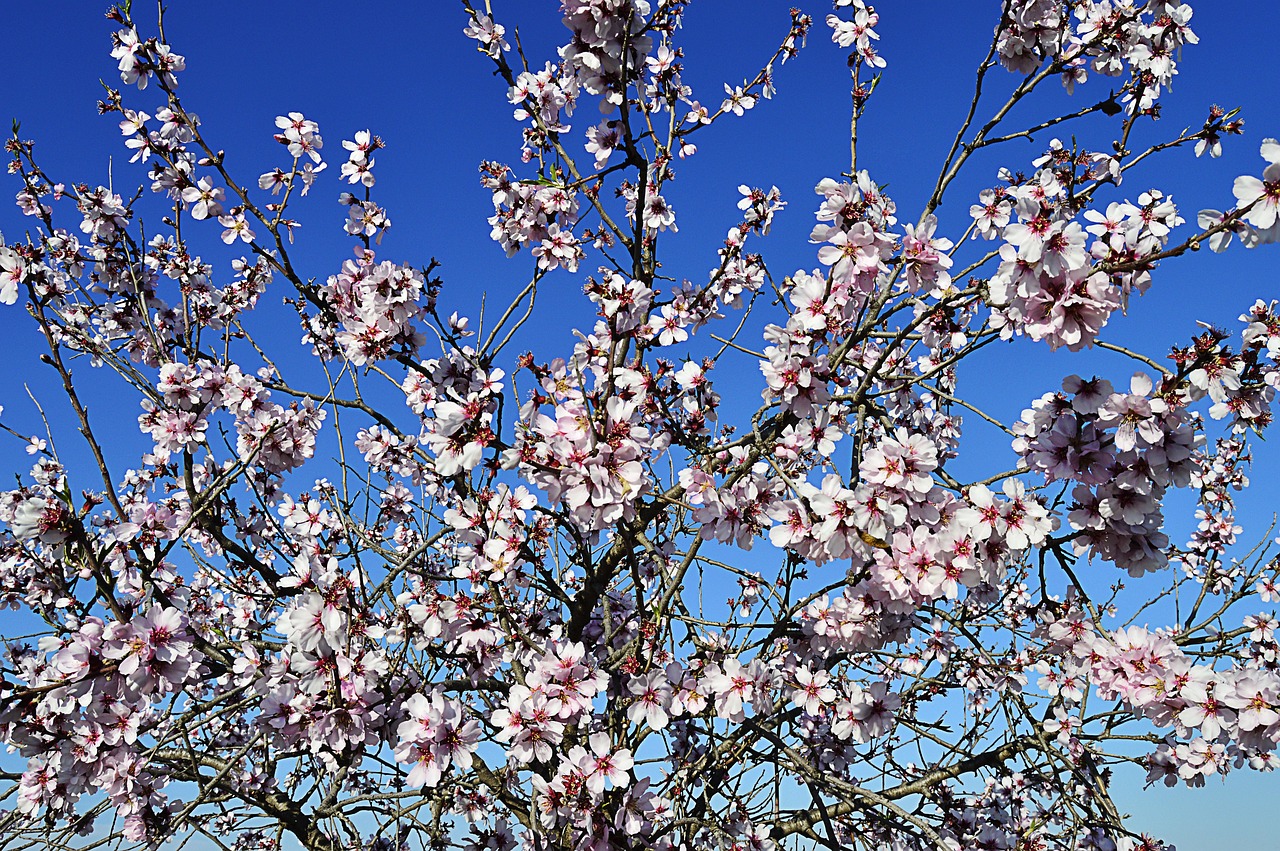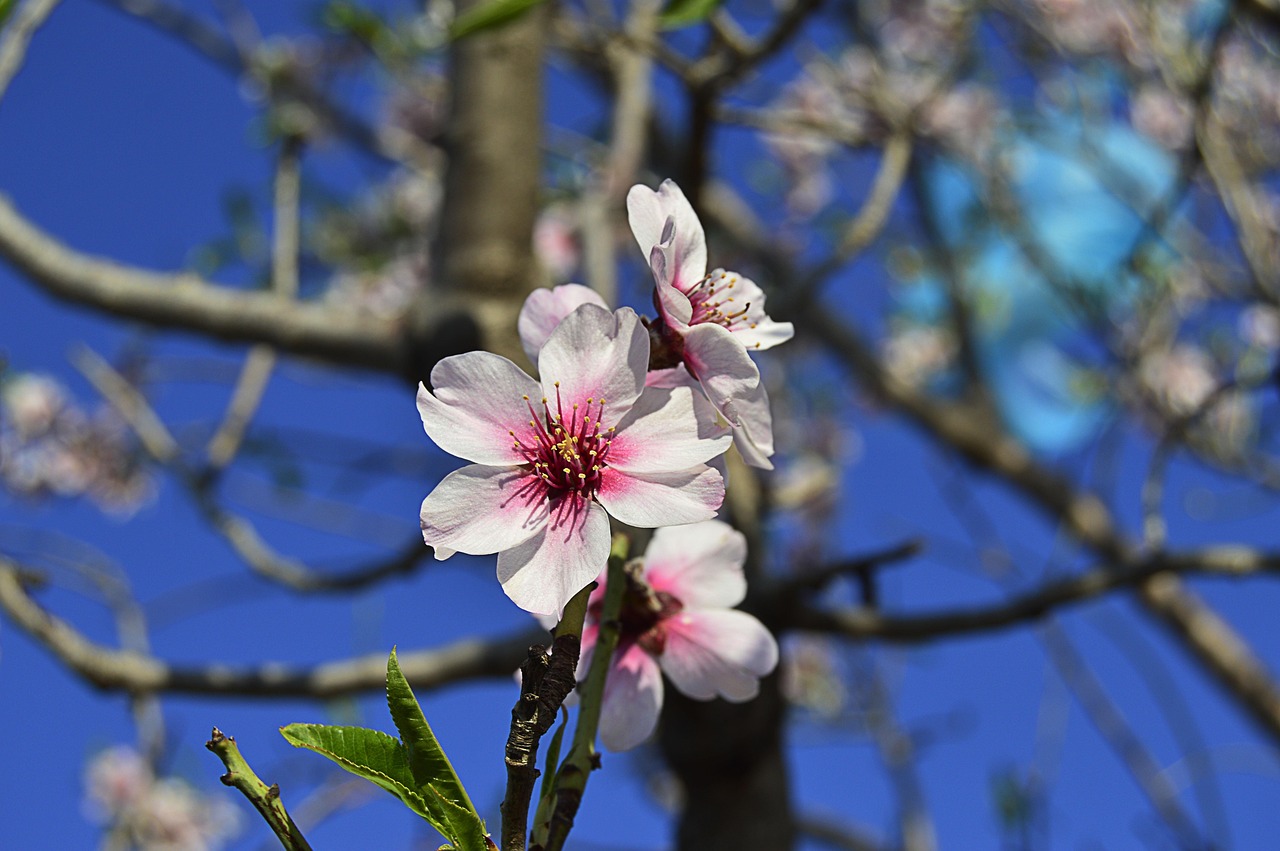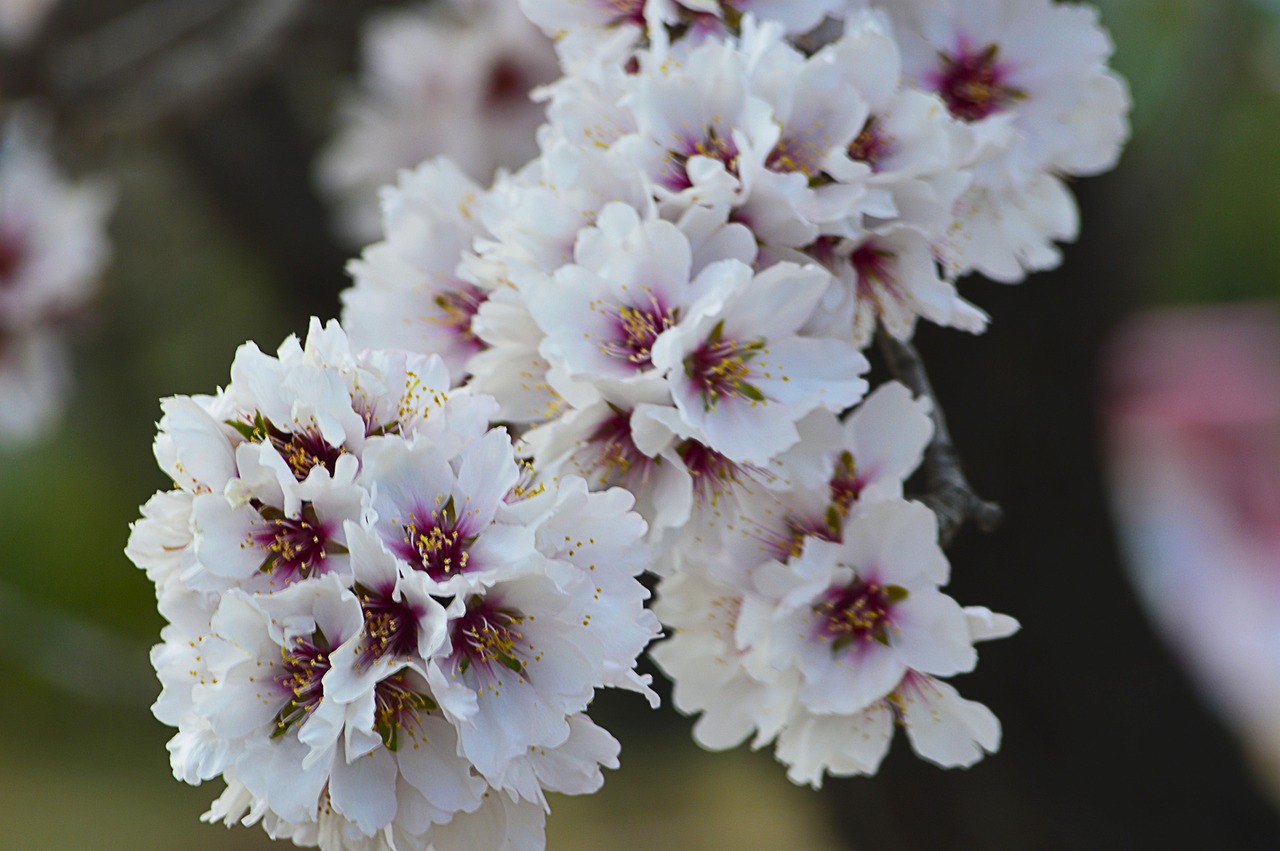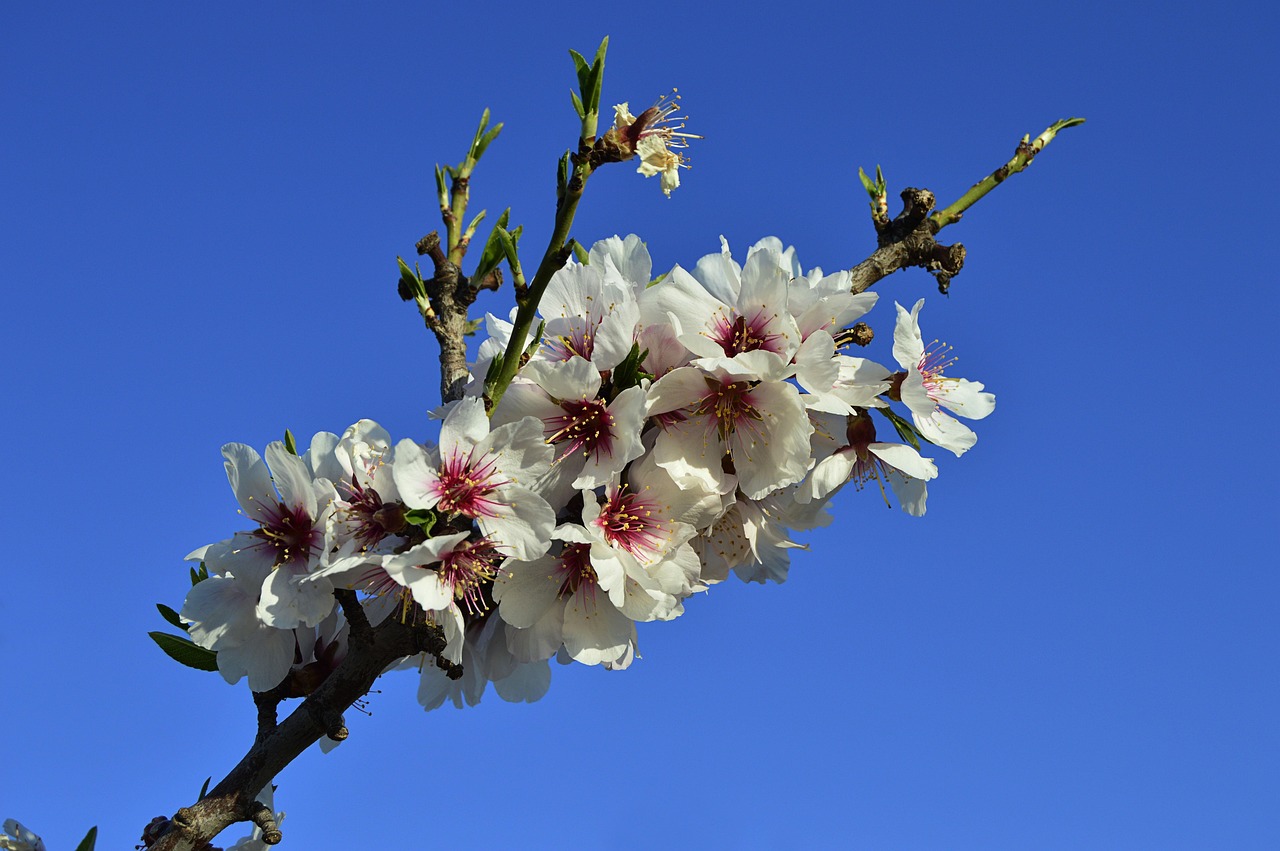Flowering almond trees are known for their stunning spring blooms. These trees produce beautiful pink or white flowers that create a picturesque landscape. To achieve maximum seasonal blooms, proper care, suitable planting conditions, and regular maintenance are essential.
Flowering almond trees, scientifically known as Prunus triloba, belong to the rose family and are popular for their ornamental value. Native to China, these trees have been cultivated in various parts of the world for their stunning display of flowers. They typically bloom in early spring, creating vibrant landscapes just as winter fades away. The blossoms can range from pale pink to deep rosy hues, making them a favorite among gardeners and landscape designers alike.

These trees not only add beauty to gardens but also attract pollinators such as bees and butterflies. Their aromatic flowers provide a feast for these creatures, contributing to the ecosystem. In addition to their visual appeal, flowering almond trees can also serve as privacy screens and windbreaks when planted strategically.
Characteristics of Flowering Almond Trees
Flowering almond trees have several distinctive characteristics that make them stand out in any landscape. Here are some key features:
- Height: These trees typically grow between 10 to 15 feet tall.
- Spread: Their canopy can spread up to 12 feet wide, providing ample shade.
- Flower Color: The flowers come in various shades of pink and white.
- Foliage: Leaves are small, oval-shaped, and turn a beautiful yellow in the fall.
- Growth Rate: Flowering almond trees grow at a moderate rate, reaching maturity in about 5 to 7 years.
Understanding these characteristics helps gardeners choose the right variety and location for planting. The size and spread of the tree should be considered when planning your garden layout. Additionally, the vibrant flowers will need sufficient sunlight to thrive.

Ideal Growing Conditions
To maximize blooms on flowering almond trees, it is essential to provide the right growing conditions. Here are some factors to consider:
| Factor | Optimal Condition |
|---|---|
| Soil Type | Well-drained, loamy soil with a pH of 6.0 to 7.0 |
| Sunlight | Full sun exposure (at least 6 hours daily) |
| Watering | Regular watering, keeping soil moist but not soggy |
| Temperature | Tolerates a range but prefers mild climates |
The soil’s drainage is particularly important. Flowering almond trees do not thrive in standing water or overly saturated soil. A well-drained loamy soil will encourage healthy root development and increase the likelihood of abundant blooms. Regular watering is crucial, especially during dry spells, but overwatering should be avoided to prevent root rot.
Caring for Flowering Almond Trees
Caring for flowering almond trees involves several key practices. These practices ensure the health of the tree and its ability to produce stunning blooms each season. Here are some essential care tips:

- Pruning: Regular pruning helps shape the tree and remove any dead or diseased branches. This should be done in late winter or early spring before blooming begins.
- Pest Control: Monitor for pests like aphids or spider mites. Use organic pest control methods to protect the tree without harming beneficial insects.
- Fertilization: Apply a balanced fertilizer in early spring to promote healthy growth and flowering.
- Mulching: Use mulch around the base of the tree to retain moisture and suppress weeds.
By following these care guidelines, gardeners can help ensure their flowering almond trees remain healthy and vibrant. Regular attention will lead to a spectacular display of blooms each spring, transforming any garden into a stunning floral paradise.
The flowering almond tree is not just a beautiful addition to any landscape; it also plays an important role in supporting local ecosystems. With proper care and attention, these trees can thrive and provide joy for many seasons to come.
Seasonal Care and Maintenance
To achieve maximum seasonal blooms from flowering almond trees, it is essential to understand the different stages of care throughout the year. Each season presents unique challenges and opportunities for enhancing the health and beauty of the tree. Below are recommended care practices for each season.

Spring Care
Spring is a crucial time for flowering almond trees as they begin to bloom. Proper attention during this season can enhance the flowering display. Key practices include:
- Inspect for Pests: As the weather warms, check for pests that may emerge. Early detection can prevent infestations.
- Watering: Ensure the tree receives adequate moisture, especially if spring is dry. Regular watering supports blooming.
- Fertilization: Apply a balanced fertilizer in early spring to provide necessary nutrients as the tree begins to grow.
- Pruning: Perform any final pruning before the blooming period starts. Remove any dead or damaged branches.
Summer Care
During the summer months, flowering almond trees require ongoing maintenance to ensure continued health and vigor. Here are some tips for summer care:
- Regular Watering: Continue to water, especially during hot spells. Deep watering is more effective than frequent shallow watering.
- Mulching: Refresh mulch around the base to keep roots cool and retain soil moisture.
- Pest Monitoring: Keep an eye out for pests and diseases, particularly during warm weather. Treat problems promptly.
Fall Care
As fall approaches, flowering almond trees begin to prepare for dormancy. This season is essential for ensuring a healthy tree come spring:
- Watering Reduction: Gradually reduce watering as the temperatures drop and rainfall increases.
- Leaf Cleanup: Rake fallen leaves to prevent disease and pests from overwintering in the debris.
- Soil Testing: Consider testing the soil to understand its nutrient profile, which can guide winter fertilization strategies.
winter Care
Winter presents unique challenges for flowering almond trees. While they are dormant, certain practices can help protect them from harsh conditions:
- Protection from Frost: If severe frost is expected, consider covering young trees with burlap or frost cloth.
- Watering Before Freeze: Water the tree deeply before freeze events to ensure it is hydrated through the winter.
- Structural Integrity Checks: Inspect the tree for any weak branches that may need support or removal.
Pest and Disease Management
Pest and disease management is vital for maintaining healthy flowering almond trees. Understanding common threats can help in developing effective strategies to combat them.
Common Pests
Several pests are known to affect flowering almond trees:
- Aphids: Small insects that suck sap from leaves, leading to curling and yellowing.
- Spider Mites: These tiny pests can create fine webs and cause leaf discoloration.
- Scale Insects: They attach themselves to branches and leaves, robbing nutrients from the tree.
To manage these pests, consider using insecticidal soap or neem oil as organic solutions. Regular monitoring helps catch infestations early.
Diseases
Diseases can also pose a threat to flowering almond trees. Here are some common issues:
- Crown Gall: A bacterial disease that causes galls on roots and stems, weakening the tree.
- Leaf Spot: Fungal diseases that cause brown spots on leaves, leading to premature leaf drop.
- Powdery Mildew: A fungal disease that results in a white powdery coating on leaves and stems.
Preventive measures such as proper spacing for air circulation, avoiding overhead watering, and removing infected plant debris can help reduce disease prevalence. Infected trees may require fungicide treatments based on specific disease types.
Selecting the Right Varieties
Selecting the appropriate variety of flowering almond tree can significantly impact the beauty and bloom of your landscape. Different varieties offer unique traits suited for various climates and preferences.
Popular Varieties
| Variety Name | Description | Bloom Color |
|---|---|---|
| Pink Flowering Almond | A compact tree with dense foliage and stunning pink flowers. | Pink |
| Double Flowering Almond | This variety produces double blooms for a fuller appearance. | Pale Pink |
| Carmine Flowering Almond | A hardier variety with vibrant carmine-colored flowers. | Carmine Red |
Selecting a variety based on your local climate, soil conditions, and aesthetic preferences will help ensure success in growing these beautiful trees. Each variety brings its unique charm to gardens and landscapes, providing a delightful show of blossoms in spring.
Landscape Design with Flowering Almond Trees
Integrating flowering almond trees into landscape design can create stunning visual impact while enhancing the overall aesthetic of a garden or outdoor space. Their beautiful blooms and attractive foliage make them versatile plants that can be used in various landscaping applications.
Design Ideas for Flowering Almond Trees
Here are several design ideas for incorporating flowering almond trees into your landscape:
- Specimen Tree: Plant a single flowering almond tree as a focal point in your garden. This allows the tree’s beauty to stand out, especially when in full bloom.
- Flowering Borders: Use multiple flowering almond trees to create a stunning border along pathways or driveways. The trees will provide a beautiful frame and seasonal interest.
- Mixed Planting Beds: Combine flowering almond trees with other flowering plants and shrubs for a vibrant display throughout the seasons. Consider pairing them with perennials that bloom at different times.
- Privacy Screens: Plant flowering almond trees in rows to create a natural privacy screen. Their dense foliage can provide both beauty and seclusion.
Choosing the right location for planting is essential to maximize the visual appeal of these trees. They thrive in full sunlight, so select a spot that receives at least six hours of direct sunlight daily.
Seasonal Color Coordination
Flowering almond trees bloom in early spring, providing a burst of color when many other plants are just beginning to wake from winter dormancy. To enhance the seasonal beauty, consider coordinating colors with other plants:
- Early Spring Bulbs: Pair flowering almond trees with early-blooming bulbs such as daffodils and tulips. Their colors can complement the almond blossoms.
- Summer Bloomers: After the almond blooms fade, include summer-blooming flowers like daylilies or echinacea to ensure continuous color throughout the growing season.
- Fall Foliage: Consider planting nearby deciduous trees or shrubs that showcase vibrant fall colors, enhancing the seasonal transition.
Propagation and Planting Techniques
Successfully propagating flowering almond trees can expand your garden or offer opportunities for sharing with friends and family. There are several methods to consider when propagating these trees.
Methods of Propagation
- Seed Propagation:
Collect seeds from mature flowering almond trees in late summer or fall. To improve germination rates, soak seeds in water for 24 hours before planting. Plant them in well-drained soil and keep them moist until they germinate.
- Cuttings:
Taking cuttings is an effective method for propagating flowering almond trees. In late spring or early summer, cut 4 to 6-inch sections of healthy stems. Remove lower leaves and place the cuttings in a pot with moist potting soil. Cover with plastic to maintain humidity until roots develop.
- Grafting:
If you want to propagate a specific variety, grafting onto compatible rootstock is an option. This method requires skill and knowledge but can produce consistent results.
Planting Techniques
When planting flowering almond trees, follow these steps for success:
- Timing: The best time to plant is in early spring or fall when temperatures are mild.
- Site Preparation: Choose a sunny location with well-drained soil. Prepare the site by removing weeds and rocks, and loosening the soil to improve drainage.
- Planting Depth: Dig a hole that is twice as wide as the root ball but no deeper than the root system. Place the tree in the hole, ensuring that the root crown is level with the soil surface.
- Watering: After planting, water thoroughly to settle the soil around the roots. Continue to monitor moisture levels during the first growing season.
Environmental Benefits of Flowering Almond Trees
Flowering almond trees provide numerous environmental benefits beyond their beauty. Understanding these benefits can enhance your appreciation for planting them in your garden.
Biodiversity Support
The blooms of flowering almond trees attract various pollinators, including bees, butterflies, and hummingbirds. This support helps maintain biodiversity in your garden ecosystem.
Erosion Control
The root systems of flowering almond trees help hold soil in place, preventing erosion on slopes or hillsides. Their presence can stabilize the soil, particularly in areas prone to washouts.
Aesthetic Value and Urban Greening
In urban settings, flowering almond trees contribute to green spaces, improving air quality and providing shade. Their vibrant blooms enhance city landscapes, creating inviting environments for residents and visitors alike.
The environmental advantages of planting flowering almond trees extend beyond aesthetics. They foster healthier ecosystems while enhancing the beauty of outdoor spaces.
Additional Considerations for Flowering Almond Trees
Beyond their beauty and ecological benefits, there are several additional considerations to keep in mind when caring for and cultivating flowering almond trees. Understanding these factors can lead to a more successful and rewarding gardening experience.
Climate Adaptability
Flowering almond trees thrive best in regions with mild climates. They prefer USDA hardiness zones 5 to 8. In areas with harsh winters or extreme heat, it is crucial to choose the right variety that can withstand local conditions. Some varieties are more resilient than others, so doing thorough research before planting is advisable.
Soil Quality and Amendments
Soil quality plays a significant role in the health of flowering almond trees. Regular soil testing can help determine pH levels and nutrient content. Based on the results, consider adding organic matter such as compost or well-rotted manure to enhance soil structure and fertility. These amendments will promote better drainage and provide essential nutrients for growth.
Water Management Strategies
Effective water management is vital for the success of flowering almond trees. Overwatering can lead to root rot, while underwatering can stress the tree and reduce blooming. Here are some strategies:
- Drip Irrigation: Installing a drip irrigation system can ensure consistent moisture levels while minimizing water waste.
- Rainwater Harvesting: Collecting rainwater in barrels can provide an eco-friendly water source for your trees during dry periods.
- Soil Moisture Monitoring: Using soil moisture sensors can help determine when watering is necessary, ensuring trees receive adequate hydration.
Companion Planting
Companion planting with flowering almond trees can enhance growth while reducing pest issues. Pairing them with beneficial plants can create a more resilient garden environment. Consider the following companion plants:
- Lavender: This aromatic herb can repel pests and attract pollinators.
- Chives: Their onion-like scent may deter harmful insects while providing beauty.
- Marigolds: Known for their pest-repelling properties, marigolds can thrive alongside flowering almond trees.
Final Thoughts
Flowering almond trees offer a stunning display of blossoms that can transform any garden into a vibrant oasis. With their beautiful flowers, ecological benefits, and adaptability to various landscapes, these trees are an excellent choice for both novice and experienced gardeners alike.
Proper care throughout the seasons ensures that these trees remain healthy and produce maximum blooms each year. From selecting the right variety to understanding soil needs and pest management, each aspect contributes to their success in your garden.
Additionally, the positive environmental impacts of flowering almond trees, such as supporting biodiversity and preventing soil erosion, make them not only an aesthetic choice but also a responsible one. As we continue to cultivate green spaces in our communities, flowering almond trees play an essential role in enhancing our environment.
In conclusion, whether you are looking to add beauty to your landscape or create a thriving ecosystem, flowering almond trees provide a multitude of benefits. With the right attention and care, your flowering almond trees will reward you with breathtaking seasonal blooms and contribute significantly to the health of your garden for years to come.
